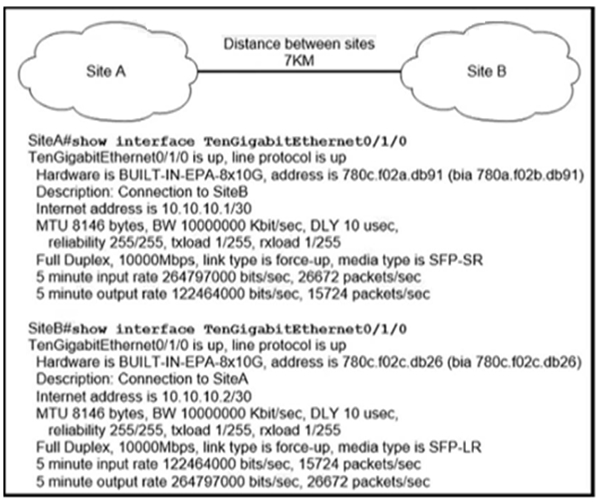
Refer to the exhibit. Site A was recently connected to site B over a new single-mode fiber path. Users at site A report intermittent connectivity issues with applications hosted at site B. What is the reason for the problem?

Refer to the exhibit. Site A was recently connected to site B over a new single-mode fiber path. Users at site A report intermittent connectivity issues with applications hosted at site B. What is the reason for the problem?
The issue is caused by an incorrect type of transceiver being inserted into a device on the link. The exhibit shows that Site A uses an SFP-SR transceiver and Site B uses an SFP-LR transceiver. SFP-SR transceivers are designed for short-range communication (up to a few hundred meters), while SFP-LR transceivers are designed for long-range communication (up to 10 kilometers). Since the distance between Site A and Site B is 7 kilometers, an SFP-SR transceiver is not suitable for this distance, causing intermittent connectivity issues.
D is correct. The -SR stands for a short reach transceiver and is used for short range applications up to 300 meters, while the -LR can achieve up to 10km
I'm back after taking my test and passing and would you believe this was question 101 of 101. Keep studying everyone
Thanks for your feedback Bonesaw. Appreciate it!
Thanks for the feed back. My exam in less than 2 weeks. This gives me more confidence.
How was it?
Wow! Thanks for letting us know. There are so many things to remember. I've been studying very hard for 15 months and i'm still not ready! But yes, i'll keep studying, there's no choice!
D is correct
I had this question in my exam
SR is 400m (from my source anyway, other sources here have a different range), while LR is 10 km. Anyway, they are 7 km apart.